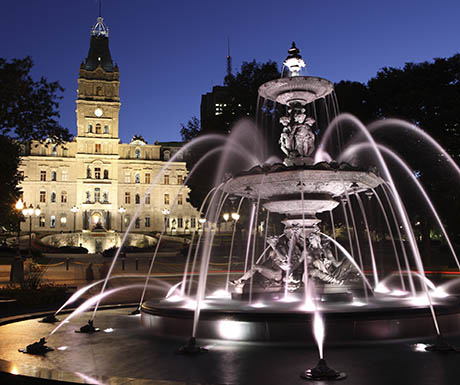Spoiler alert to any adolescent girls reading this Justin Bieber does NOT make the list. Sorry about that. The rest of you can breathe a sigh of relief and read on, because Canada is where its at.
Bears and belugas in Manitoba
To describe this extraordinary confluence of wildlife wonders as original doesnt come close. Churchill, on Hudson Bay in deepest Manitoba, is known as the polar bear capital of the world and most visitors make their way there to see the worlds biggest bear in winter, when they can be seen in their greatest numbers. The canny traveller, however, should consider going in July and August, when there are still plenty of bears, but against a backdrop of brilliant wild flowers rather than bleak winter scenery.
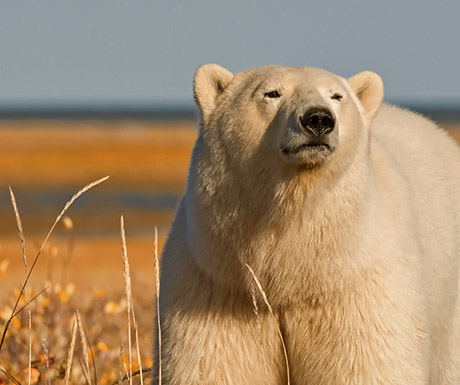
Even better, this is when extraordinary beluga whales migrate into Hudson Bay, and these pure white whales are so curious that you can kayak or even snorkel with them. Dont worry you will be kitted out with a dry-suit; as you can imagine even in summer the waters on the chilly side. Stay at the remarkably comfortable (given its extremely remote location) Seal River Heritage Lodge with its glass-fronted dining area, so you might even see polar bears while enjoying your lunch.
Bears and whales, British Columbia-style
Seguing seamlessly to the west coast, any visitor to Canada can also see bears (brown and grizzly, this time) and whales (orcas, not belugas) in their natural habitat while staying on Vancouver Island. To give you an idea of the size of the place, Vancouver Island is the size of Wales (the rugby playing, choral singing type I know; its terribly confusing) with a tiny population, including anyone lucky enough to be staying at one of several seriously sophisticated lodges.
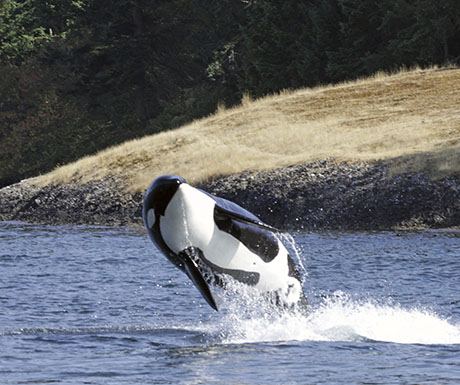
Best in show is Clayoquot Wilderness Resort, where guests arrive by seaplane and stay in extremely comfortable canvas tents on raised platforms. Activities on offer kayaking, biking, riding and, of course, whale and bear-watching. Fanatical fishing fans should note that Vancouver Island also has excellent trout and salmon fishing. The icing on this rather beguiling cake? The chance to combine Vancouver Island with Vancouver City, one of the most civilised cities in North America, and the perfect urban foil to the wilderness experience on the island. Throw in the luxury of Whistler resort and this terrific twin centre becomes a perfect triplet centre (think I might have just invented a phrase there).
The Canadian Rockies
This is dictionary definition Big Country, and at the regions heart lies a UNESCO World Heritage Site combining Banff, Jasper, Kootenay and Yoho National Parks, with the Matterhorn-like Mount Assiniboine the focal point of what must be one of the most photogenic regions of any country in the world. So what to do when you not papping the landscape and standing open-mouthed in awe at the sheer scale of the scenery?
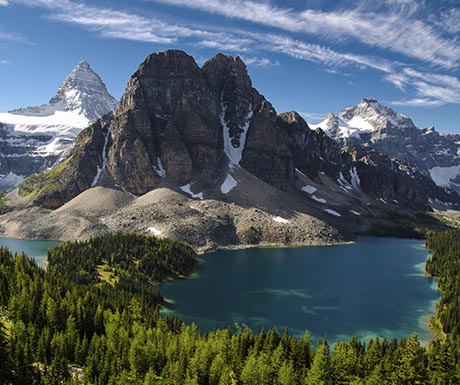
Rather conveniently the Rockies are home to some serious sports resorts such as Banff and Jasper. If youre wanting to trek or mountain bike on beautifully maintained and signed routes, the best months are June and September. For skiers, the winter powder is perfect, and Lake Louise with Mount Assiniboine as a backdrop – is particularly good for intermediates. Whatever the season, expect an impressive range of accommodation, and lively nightlife in resort towns that are well geared up for aprs-ski or aprs-trek fun.
On to Ontario
Somewhere the size of France and Spain combined should probably get a mention at this stage, so meet Ontario, home to the Canadian capital of Ottawa, and the provincial (but anything but provincial) capital of Toronto. It may not be the edgiest city (Berlin and Mexico City can relax at this point) but the Edgewalk, where you are suspended backwards off a lip at the top of the CN Tower, might not be one for vertigo sufferers.
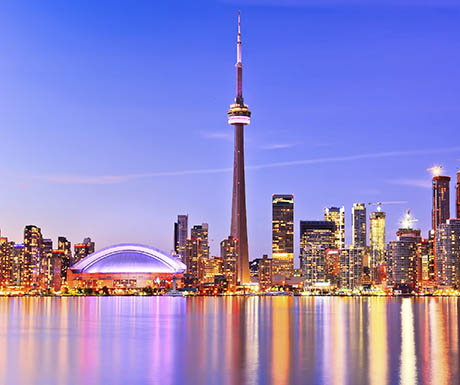
Elsewhere in the province are the classic site of Niagara Falls (with under-rated vineyards nearby) and Algonquin National Park where you can see moose, beaver and black bears (no whales this time. Sorry its landlocked).
Quebec (akathe French bit)
So far so English-speaking, but Quebecs essential French-ness adds a whole new angle to Canada that means its well worth including in any itinerary. The UNESCO Heritage Site capital, Quebec City, was founded as far back as 1608, and throughout the province the French influenced cooking is excellent, ranging from haut cuisine to maple syrup and the national dish poutine a comfort food classic of French (naturellement) fries, cheese curd and gravy. Quebec is also the place to see the nutty Red Bull Crashed Ice skating races and Canadians greatest passion of all (ice) hockey.
